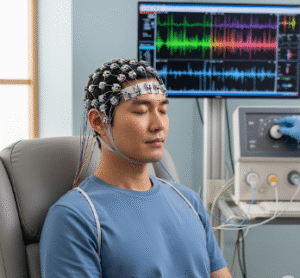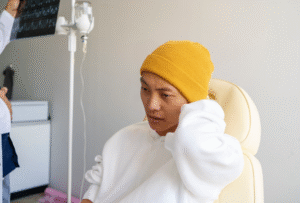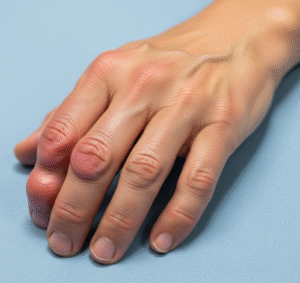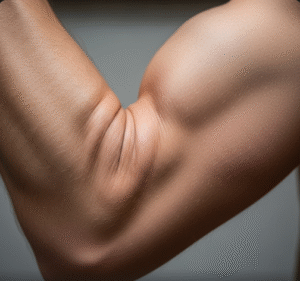Overview
Muscle cramps are sudden, involuntary contractions of one or more muscles, causing sharp pain and temporary immobility of the affected area. They can occur in any muscle group but are most common in the calves, thighs, and feet. Muscle cramps can affect people of all ages, from athletes to older adults, and range from mild discomfort to severe pain that temporarily hinders movement.
In Korea, sports medicine, neurology, and rehabilitation clinics provide diagnostic evaluation, treatment, and preventive care for recurrent muscle cramps. Management may include physical therapy, medications, and lifestyle modifications depending on the underlying cause.
Key Facts
➤ Muscle cramps are sudden, involuntary contractions of skeletal muscles.
➤ Commonly affect calves, thighs, feet, and hands.
➤ Episodes usually last seconds to several minutes.
➤ Causes can include dehydration, electrolyte imbalances, overuse, or underlying medical conditions.
➤ In Korea, treatment may involve rehabilitation, medications, and lifestyle guidance.
What Are Muscle Cramps?
Muscle cramps occur when a muscle contracts involuntarily and cannot immediately relax. The exact mechanism involves:
➔ Hyperexcitability of motor neurons in the spinal cord.
➔ Imbalance of electrolytes such as potassium, magnesium, and calcium.
➔ Dehydration or inadequate blood flow to the muscles.
➔ Fatigue or overuse of the affected muscle group.
Cramps can be sporadic or recurrent, and severe, frequent cramps may indicate an underlying medical condition requiring evaluation.
Symptoms Related to Muscle Cramps
The main features include:
➤ Sudden, sharp pain in a muscle.
➤ Visible tightening or hardening of the affected muscle.
➤ Temporary immobility or stiffness.
➤ Tingling or muscle twitching before a cramp occurs.
➤ Occasionally, muscle soreness persists for hours after the cramp resolves.
Causes / Possible Causes
Muscle cramps can result from various physiological and pathological factors:
Common Causes
➤ Dehydration – loss of fluids can impair muscle function.
➤ Electrolyte imbalances – low levels of potassium, calcium, or magnesium.
➤ Overuse or strenuous activity – especially in athletes or physically active individuals.
➤ Prolonged sitting or standing – poor circulation may trigger cramps.
Medical Causes
➤ Peripheral artery disease – reduces blood flow to muscles.
➤ Nerve disorders – such as neuropathy or spinal cord compression.
➤ Endocrine disorders – including diabetes, thyroid dysfunction, or adrenal imbalance.
➤ Medication side effects – diuretics, statins, or beta-agonists.
Other Contributing Factors
➤ Aging muscles with reduced elasticity.
➤ Pregnancy due to circulatory and hormonal changes.
➤ Nutritional deficiencies, particularly protein or vitamin B complex.
Risk Factors
➤ Older age and reduced muscle mass.
➤ Athletes engaging in intense or prolonged exercise.
➤ Conditions affecting circulation or nerve function.
➤ Dehydration or inadequate fluid intake.
➤ Use of certain medications or supplements affecting electrolyte balance.
Complications
While most muscle cramps are benign, frequent or severe cramps may cause:
➤ Muscle strain or injury if cramp occurs during activity.
➤ Sleep disturbances if cramps occur at night.
➤ Impaired mobility or reduced exercise tolerance.
➤ Underlying circulatory or metabolic disorders if cramps are persistent.
When Should I See My Doctor?
Medical evaluation is advised if:
➤ Cramps are frequent, severe, or worsening.
➤ Accompanied by swelling, redness, or weakness.
➤ Occur in multiple muscle groups simultaneously.
➤ Associated with numbness, tingling, or other neurological symptoms.
➤ You have known vascular, metabolic, or neuromuscular conditions.
Early assessment can help identify underlying causes and prevent complications.
Care and Treatment
Home Care and Lifestyle Measures
➤ Stretch affected muscles gently when a cramp occurs.
➤ Hydrate adequately and maintain electrolyte balance.
➤ Apply heat or massage to relax tense muscles.
➤ Avoid prolonged static positions; move regularly.
➤ Incorporate strengthening and flexibility exercises.
Medical Treatments
➤ Electrolyte supplementation if deficiencies are identified.
➤ Muscle relaxants or pain relief medications for recurrent cramps.
➤ Address underlying medical conditions such as neuropathy or circulatory issues.
➤ Physical therapy for chronic or exercise-induced cramps.
Preventive Measures
➤ Warm-up and stretch before intense activity.
➤ Maintain balanced diet with sufficient minerals and vitamins.
➤ Avoid excessive alcohol or caffeine, which may contribute to dehydration.
➤ Monitor medications that could predispose to cramping.
Treatment Options in Korea
Korean clinics and hospitals provide comprehensive management for muscle cramps:
Diagnostic Services
➤ Blood tests to assess electrolytes, kidney, and liver function.
➤ Nerve conduction studies if neuropathy or nerve compression is suspected.
➤ Imaging (ultrasound or MRI) for muscle or vascular evaluation.
Therapies and Supportive Care
➤ Physical therapy programs for strengthening and flexibility.
➤ Nutritional counseling to ensure adequate protein and mineral intake.
➤ Medications for neuropathic or metabolic-related cramps.
➤ Education on exercise modification, hydration, and lifestyle adjustments.
✅ In summary: Muscle cramps are sudden, involuntary muscle contractions that cause pain and temporary immobility. They may result from dehydration, electrolyte imbalances, overuse, or underlying medical conditions. In Korea, patients can access advanced diagnostic services, physical therapy, medical treatment, and preventive guidance to manage cramps effectively and improve overall muscular health.













